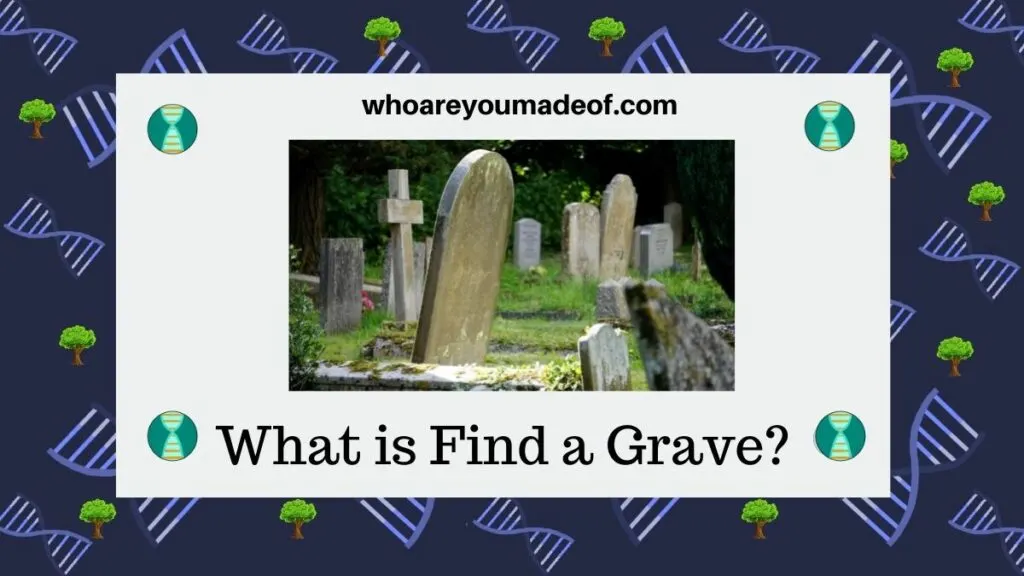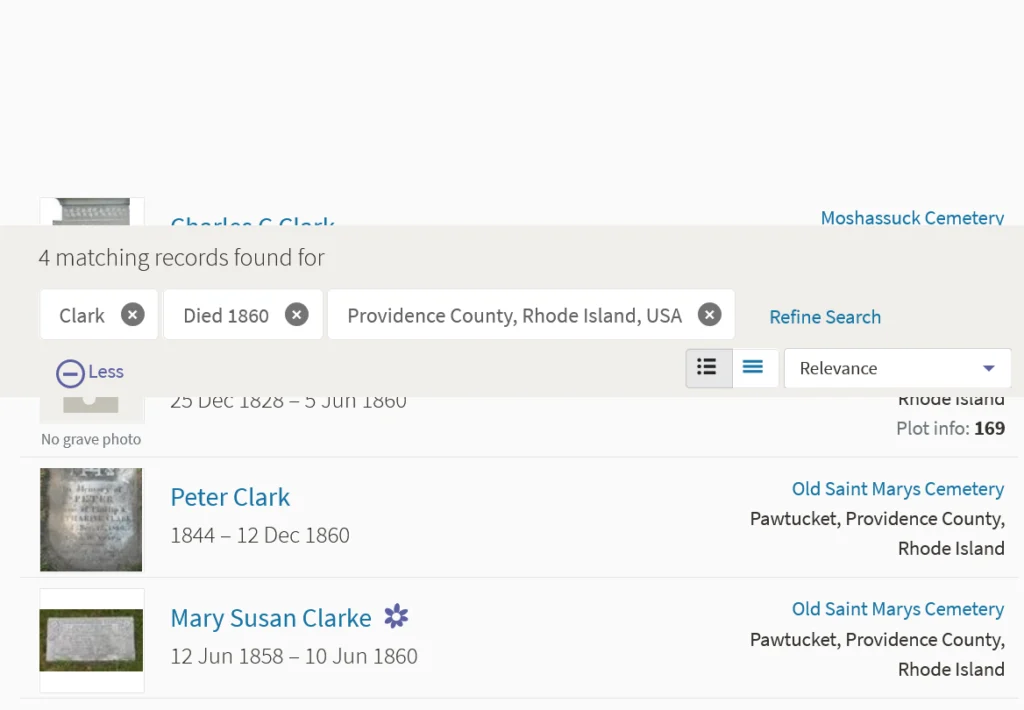Are you curious about Find a Grave? In this post, you will learn what it is, where the information comes from, and how to use it for your family tree research.
Find-a-Grave is a very useful and interesting website that should be in the toolbox of any genealogist or family tree researcher that depends on the internet for learning about their ancestors. Information from the site can help us learn more about where our ancestors may have lived their lives, who their family members were, and more.

I have been using Find-a-Grave for several years, and have been able to locate burial locations for some of my more recent ancestors. In addition, I have learned important details about more distant ancestors, too, through details on their memorials.
Find-a-Grave also provides opportunities for us to give back to and participate in the greater genealogical community. We can help by photographing cemeteries or grave sites, leave “digital” flowers for ancestors who we would like to honor, and provide details on memorials that can help future researchers connect ancestors to their families.
Is Find a Grave legitimate?
Yes, Find a Grave is a legitimate website. You can find details about locations of grave sites, cemeteries, photographs of the person who passed away, and biographical details about individuals on the site.
In addition, you can occasionally find obituaries, additional details available only on Find-a-Grave added by the person who created the memorial. You will often find that someone has taken a photograph of the cemetery and the gravestone of the individual, which is wonderful – most of us would have to travel to these locations to take the photographs ourselves.
Is Find a Grave free?
Find-a-Grave has always been free to use, and as of 2023, it is still completely free. This means that anyone with internet access can find memorials, search cemeteries for graves, and sign up to be a contributor to the site.
Find-a-Grave was originally founded in 1995 by a man named Jim Tiptop for the purpose of documenting the locations of grave sites of famous people. While there are still plenty of famous memorials on Find-a-Grave, the site quickly began adding entries for non-famous people, and has now become a very popular tool for family tree research.
As I write this, I now realize that Find-a-Grave must be among some of the oldest websites still online. It is also interesting that, despite a transfer of ownership to Ancestry.com and several site redesigns, Find a Grave is still free and has not strayed far from its original intended purpose.
How does Find a Grave get information?
All of the information that is available on Find-a-Grave is contributed by the website’s millions of users and members from over more than two decades. Those who contribute to the wealth of information on the site are volunteers.
Because information found on Find-a-Grave is driven by members and volunteer contributors, we should always view details found on memorials as “clues”. This means that memorials on the site are not true genealogical evidence, but they are clues as to where we can find other documents that can serve as evidence.
For example, if we find a memorial for an ancestor that details when and where they were born, we can look for vital records in that city or state to verify the information that we saw on the Find-a-Grave memorial. We can also use a photograph of the tombstone as secondary evidence, especially if it is good quality and includes enough detail.
How to use Find a Grave?
It is very easy to use Find-a-Grave to find specific memorials or cemeteries. These searches can be done directly from the home page, which currently looks similar to the image below.

Your search can be very general, or you can enter as many details as you know about your ancestor or relative. However, the more details you know, the better the results will be.
For example, you could search for anyone with the last name of “Clark” who is buried in Rhode Island. If you did so, you would receive over 3,000 matching results:

If you know more details about the ancestor you are looking for, you can include their name, their year of death, or even the name of the cemetery if you know it. As an example, below you can see what happened when I searched for everyone with the surname “Clark” who have a memorial on the site in Providence County, Rhode Island:

As you can see, it is easier to search through four matching records than more than 3000. Sometimes, specific is good, but when it doesn’t return the results you are looking for, you should try a broader search.
You do not have to have a Find a Grave account to search for memorials on the site. However, if you would like to contribute to the site in any way, including leaving digital flowers on a memorial, you must register for a free account.
There is a link on the Find-a-Grave homepage called “Register”. If you click on it, you will see a pop-up window appear where you can enter your details to register and create your account.
Once you have an account, you can quickly and easily leave flowers with a message to your relatives, which can sometimes be very helpful to other users. You will also be able to begin contributing, performing tasks such as transcribing photographs or fulfilling photograph requests for your local cemeteries.
Conclusion
I hope that this post has helped you understand more about what Find a Grave is, how information ends up on the website, and how it can help you learn more about your ancestors.
If you have any questions about something that you read in this post, or if you want to share an interesting detail that you discovered about your family tree through Find a Grave, I would love to hear from you in the discussion below.
Thanks for stopping by and reading today!

Tabatha Steele
Wednesday 20th of October 2021
I love Find-A-Grave!